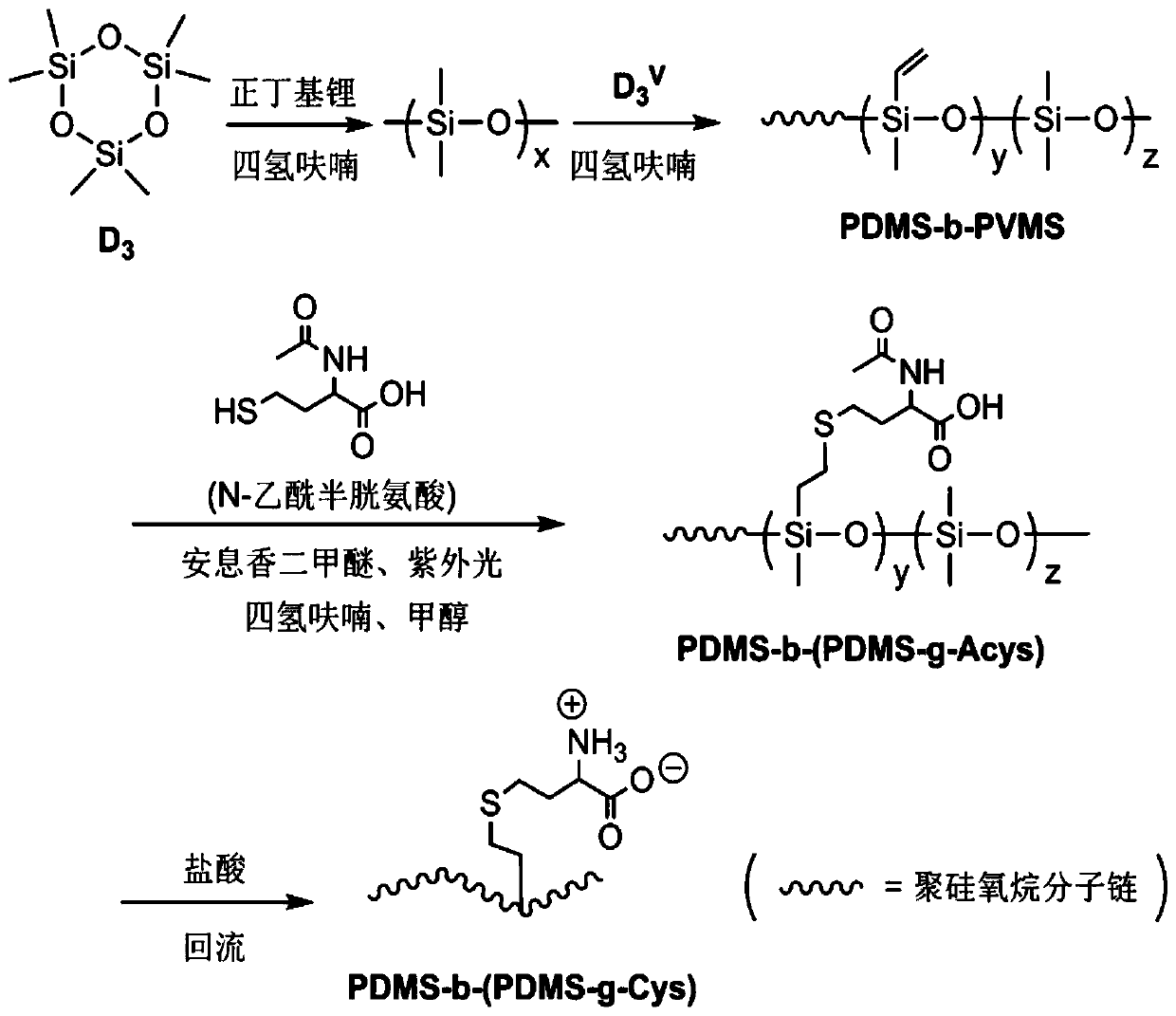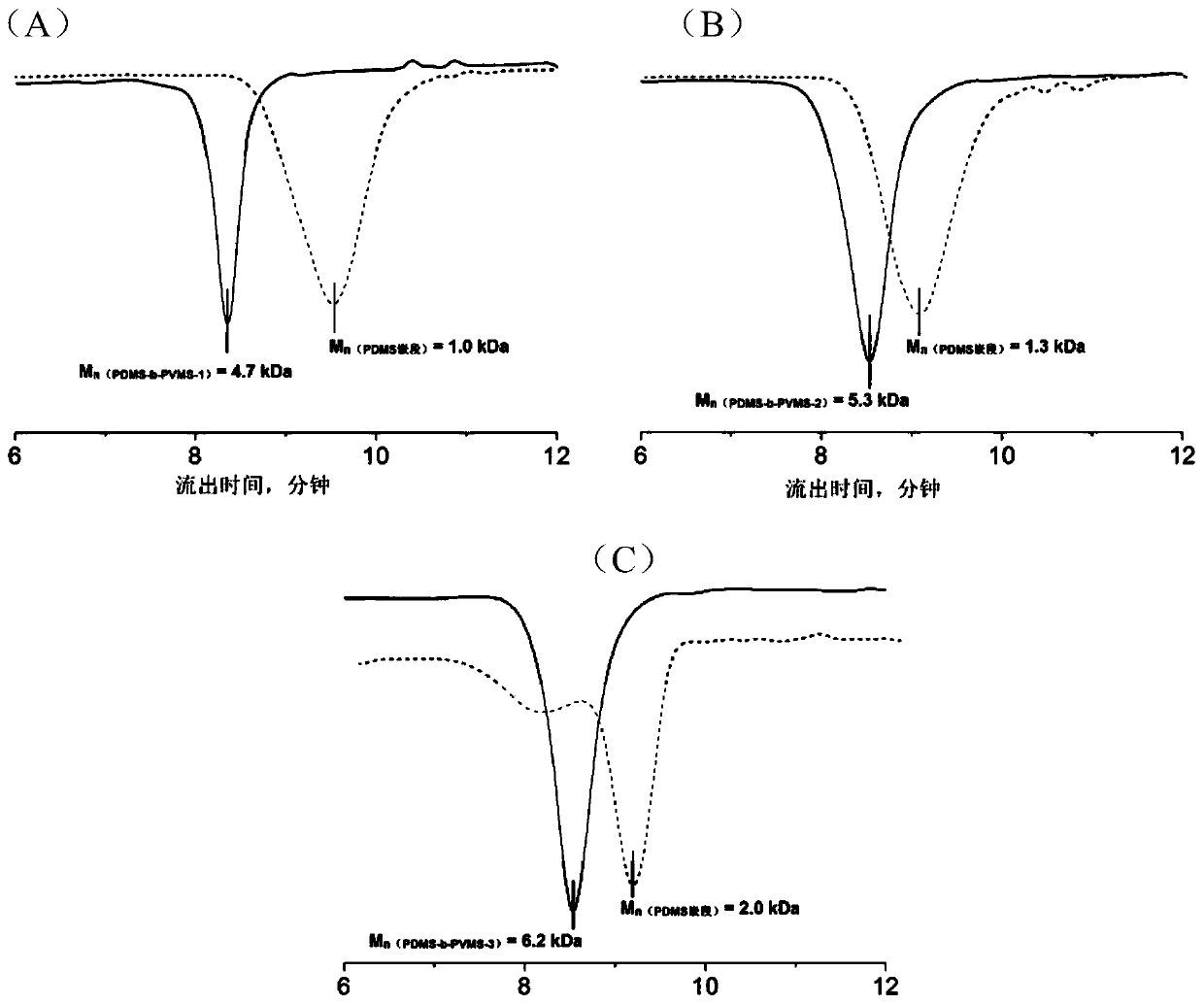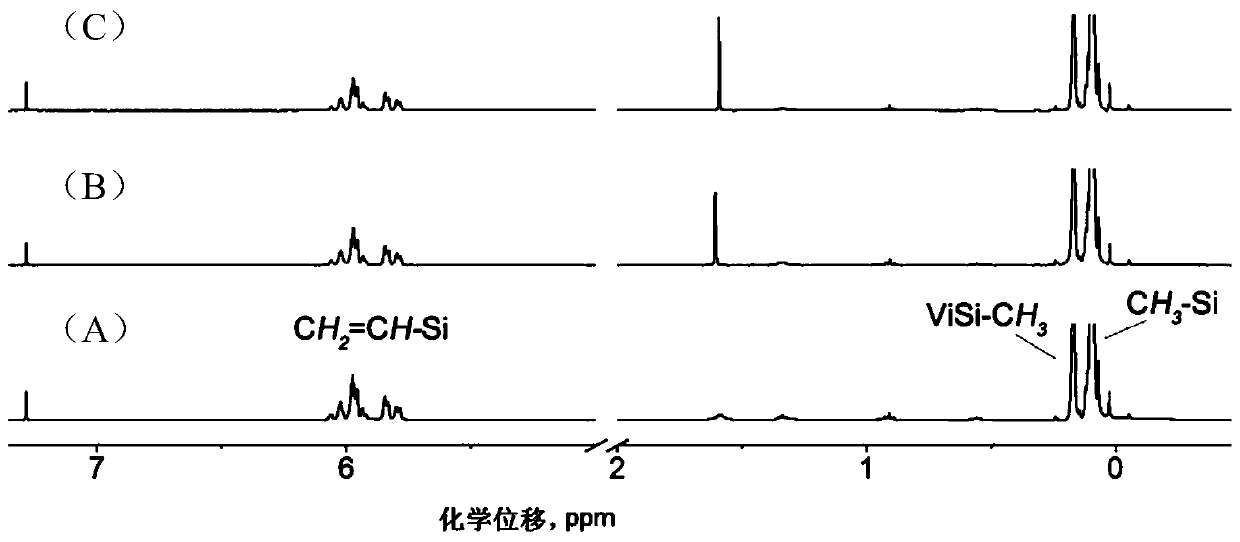Polysiloxane block copolymer grafted with cysteine and its preparation method and application
A polysiloxane block and cysteine technology, applied in chemical instruments and methods, other chemical processes, etc., can solve problems such as limitations
- Summary
- Abstract
- Description
- Claims
- Application Information
AI Technical Summary
Problems solved by technology
Method used
Image
Examples
Embodiment 1
[0054] Preparation of polydimethylsiloxane-polysiloxane grafted cysteine block copolymer: the block length ratio is PDMS:PDMS-g-Cys=1:4, the PDMS block length is 1kDa, and the PDMS- The g-Cys block is 4 kDa long. In the PDMS-g-Cys block, the proportion of the chain segments grafted with cysteine groups to the total number of segments (grafting ratio) is 1 / 2. The preparation process is as figure 1 As shown, the specific steps are as follows:
[0055] (1) In a reaction flask equipped with a magnetic stir bar, add 2.5g D 3 , and then seal it with a silica gel stopper, vacuumize the inside of the bottle and feed high-purity nitrogen, repeat the operation three times to ensure that the bottle is filled with nitrogen. Inject 10 mL of dry tetrahydrofuran into a syringe to dissolve D 3 After obtaining a clear solution, inject 1.0 mL of n-hexane solution containing 2.5 mol / L n-butyllithium at room temperature to initiate anionic ring-opening polymerization. After keeping stirr...
Embodiment 2
[0062] Preparation of polydimethylsiloxane-polysiloxane grafted cysteine block copolymer: the block length ratio is PDMS:PDMS-g-Cys=3:8, the PDMS block length is 1.5kDa, and the PDMS The -g-Cys block is 4 kDa long. In the PDMS-g-Cys block, the proportion of the chain segments grafted with cysteine groups to the total number of segments (grafting ratio) is 1 / 2.
[0063] (1) In a reaction flask equipped with a magnetic stirring bar, add 3.75g D 3 , and then seal it with a silica gel stopper, vacuumize the inside of the bottle and feed high-purity nitrogen, repeat the operation three times to ensure that the bottle is filled with nitrogen. Inject 10 mL of dry tetrahydrofuran into a syringe to dissolve D 3 After obtaining a clear solution, inject 1.0 mL of n-hexane solution containing 2.5 mol / L n-butyllithium at room temperature to initiate anionic ring-opening polymerization. After keeping stirring at 0-5°C for about 12 hours, take a small amount of the reaction solution t...
Embodiment 3
[0068] Preparation of polydimethylsiloxane-polysiloxane grafted cysteine block copolymer: the block length ratio is PDMS:PDMS-g-Cys=1:2, PDMS block length is 2kDa, PDMS- The g-Cys block is 4 kDa long. In the PDMS-g-Cys block, the proportion of the chain segments grafted with cysteine groups to the total number of segments (grafting ratio) is 1 / 2.
[0069] (1) In a reaction flask equipped with a magnetic stir bar, add 5.0g D 3 , and then seal it with a silica gel stopper, vacuumize the inside of the bottle and feed high-purity nitrogen, repeat the operation three times to ensure that the bottle is filled with nitrogen. Inject 10 mL of dry tetrahydrofuran into a syringe to dissolve D 3 After obtaining a clear solution, inject 1.0 mL of n-hexane solution containing 2.5 mol / L n-butyllithium at room temperature to initiate anionic ring-opening polymerization. After keeping stirring at 0-5°C for about 12 hours, take a small amount of the reaction solution to terminate the act...
PUM
| Property | Measurement | Unit |
|---|---|---|
| wavelength | aaaaa | aaaaa |
Abstract
Description
Claims
Application Information
 Login to View More
Login to View More - R&D
- Intellectual Property
- Life Sciences
- Materials
- Tech Scout
- Unparalleled Data Quality
- Higher Quality Content
- 60% Fewer Hallucinations
Browse by: Latest US Patents, China's latest patents, Technical Efficacy Thesaurus, Application Domain, Technology Topic, Popular Technical Reports.
© 2025 PatSnap. All rights reserved.Legal|Privacy policy|Modern Slavery Act Transparency Statement|Sitemap|About US| Contact US: help@patsnap.com



